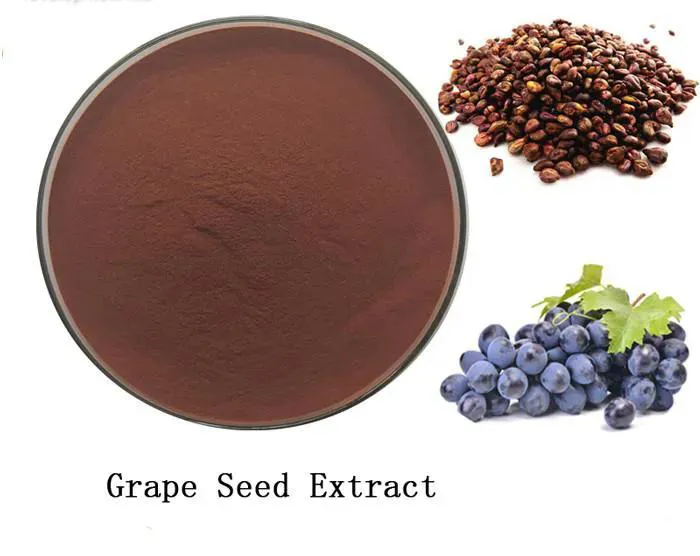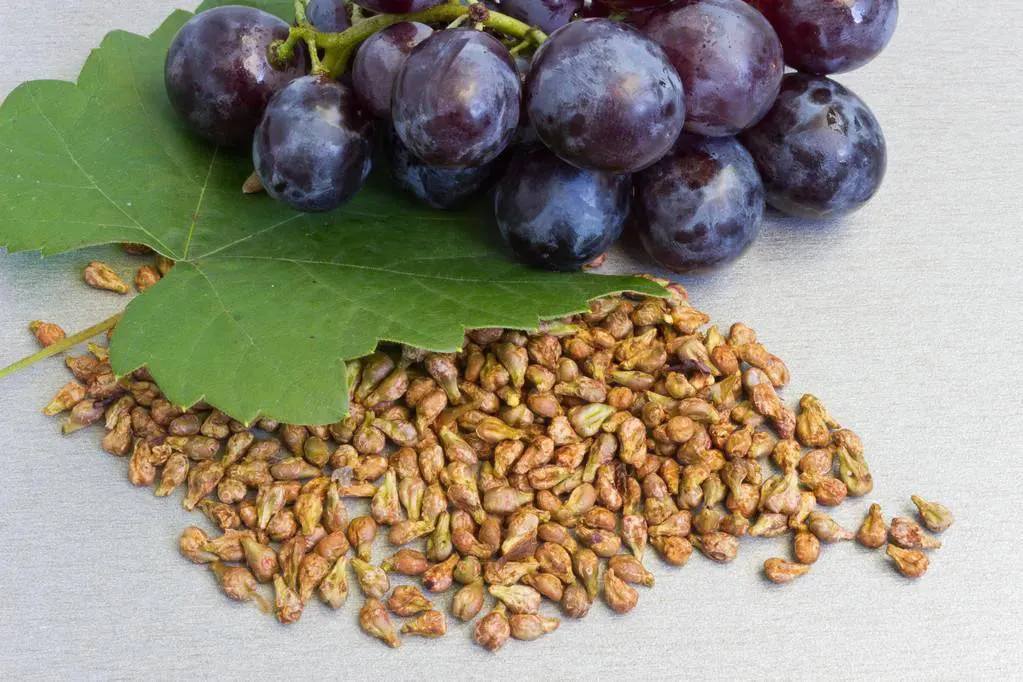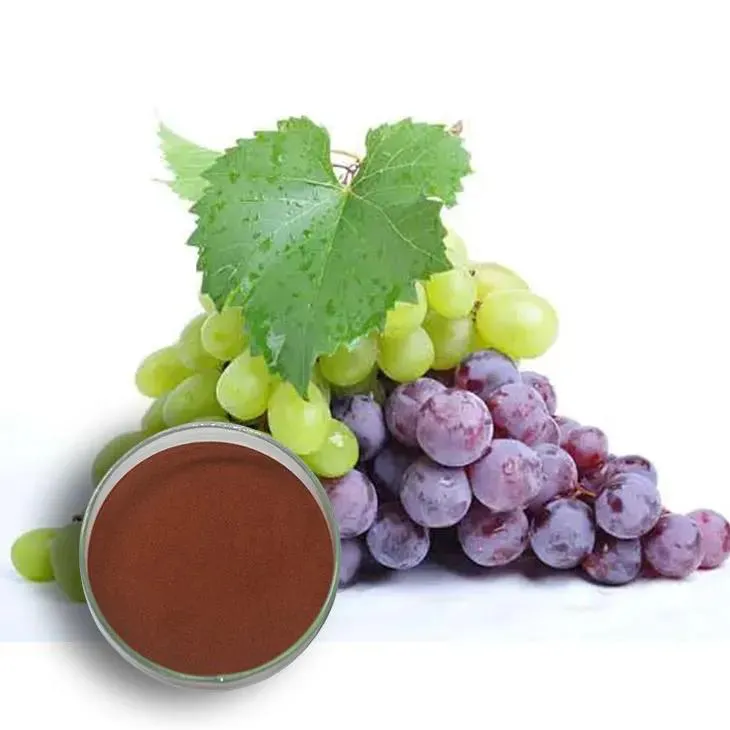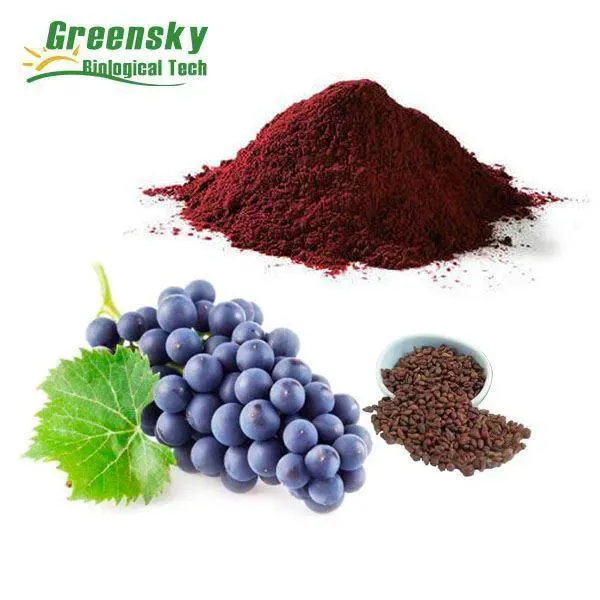- 0086-571-85302990
- sales@greenskybio.com
Natural Skin Savior: How Grape Seed Extract May Aid in Vitiligo Treatment
2024-08-15

1. Introduction to Vitiligo
Vitiligo is a complex and often distressing skin disorder. It is characterized by the loss of pigment - producing cells, known as melanocytes, in the skin. This results in white patches on the skin that can vary in size, shape, and location. The exact cause of vitiligo is still not fully understood, but it is believed to be an autoimmune disorder, where the body's immune system mistakenly attacks and destroys its own melanocytes.
Treatment of vitiligo has been a long - standing challenge in dermatology. Conventional treatments include topical corticosteroids, phototherapy, and in some cases, surgical options such as skin grafting. However, these treatments often have limitations, including potential side effects and variable effectiveness.

2. Grape Seed Extract: An Overview
Grape Seed Extract is a natural substance derived from the seeds of grapes (Vitis vinifera). It is rich in a variety of bioactive compounds, most notably proanthocyanidins, which are a type of flavonoid. These compounds are known for their antioxidant, anti - inflammatory, and anti - microbial properties.
Antioxidant Properties: Grape Seed Extract has strong antioxidant capabilities. Antioxidants play a crucial role in protecting the body from oxidative stress. Oxidative stress occurs when there is an imbalance between the production of reactive oxygen species (ROS) and the body's ability to detoxify them. In the context of vitiligo, oxidative stress may be involved in the destruction of melanocytes. By neutralizing ROS, grape seed extract may help prevent further damage to melanocytes.
Anti - Inflammatory Effects: Inflammation is another factor that may be associated with vitiligo. The immune - mediated destruction of melanocytes may be accompanied by an inflammatory response in the skin. Grape seed extract's anti - inflammatory properties can potentially reduce this inflammation, which may in turn help to create a more favorable environment for the survival and function of melanocytes.

3. Scientific Research on Grape Seed Extract and Vitiligo
3.1 In - vitro Studies
Several in - vitro studies have been conducted to explore the effects of grape seed extract on melanocytes. In these laboratory - based experiments, melanocytes are cultured in a controlled environment and exposed to grape seed extract.
One study found that grape seed extract was able to enhance the survival of melanocytes in the presence of oxidative stress - inducing agents. The extract seemed to protect the melanocytes by activating certain antioxidant defense mechanisms within the cells. This suggests that it may have a direct protective effect on melanocytes, which could be beneficial for vitiligo patients.
Another in - vitro study focused on the impact of grape seed extract on the expression of genes related to melanocyte function. It was observed that the extract could modulate the expression of genes involved in melanin synthesis, which is the process by which melanocytes produce the pigment melanin. This modulation may potentially help to restore pigmentation in vitiligo - affected skin.
3.2 Animal Studies
Animal models have also been used to study the effects of grape seed extract on vitiligo - like conditions.
In an animal study using a mouse model with chemically - induced depigmentation (similar to vitiligo), grape seed extract was administered orally. Over a period of time, it was noted that the treated mice showed a reduction in the size of the depigmented areas compared to the control group. Histological analysis of the skin samples from the treated mice revealed an increase in the number of melanocytes and an improvement in the structure of the skin's pigment - producing units.
However, it is important to note that while animal studies provide valuable insights, the translation of these results to human patients may not be straightforward. There are differences in skin structure, immune system function, and overall physiology between animals and humans.
3.3 Human Studies
Although there are currently limited human studies on the use of grape seed extract for vitiligo treatment, some preliminary investigations have been carried out.
A small - scale clinical trial involved a group of vitiligo patients who were given grape seed extract supplements in addition to their regular treatment. After a few months of treatment, some patients reported a mild improvement in the appearance of their vitiligo patches. However, this improvement was not uniform across all patients, and further larger - scale studies are needed to confirm these findings.
Another observational study looked at the lifestyle and dietary habits of vitiligo patients, including their consumption of foods rich in grape seed extract (such as grapes and grape - based products). It was found that patients who had a relatively higher intake of these substances tended to have a slower progression of their vitiligo compared to those with a lower intake. While this study does not prove causation, it does suggest a possible association between grape seed extract and the management of vitiligo.

4. How Grape Seed Extract May Interact with the Body's Mechanisms in Vitiligo
Grape seed extract may interact with the body's mechanisms related to vitiligo in multiple ways.
Immune Modulation: As mentioned earlier, vitiligo is thought to be an autoimmune disorder. Grape seed extract may have the potential to modulate the immune system. It could potentially reduce the over - activity of the immune system that is responsible for attacking melanocytes. Some studies suggest that the flavonoids in grape seed extract can interact with immune cells, influencing their cytokine production and immune response regulation. By modulating the immune response, it may be possible to prevent further destruction of melanocytes and even promote their regeneration.
Melanocyte Protection and Stimulation: The antioxidant and anti - inflammatory properties of grape seed extract can directly protect melanocytes from damage. Additionally, as seen in some in - vitro studies, it may also stimulate the function of melanocytes. By enhancing the survival and function of melanocytes, grape seed extract can contribute to the restoration of pigmentation in vitiligo - affected skin.
Improvement of Skin Microenvironment: The skin is a complex organ with its own microenvironment. In vitiligo, this microenvironment may be disrupted due to factors such as inflammation and oxidative stress. Grape seed extract can help to improve the skin's microenvironment by reducing inflammation, increasing antioxidant levels, and promoting better blood circulation in the skin. A healthier skin microenvironment can support the growth and function of melanocytes.

5. Considerations and Limitations
While grape seed extract shows promise as a potential natural remedy for vitiligo, there are several considerations and limitations.
Dosage and Standardization: There is currently no established standard dosage for using grape seed extract in the treatment of vitiligo. Different products may contain varying concentrations of active ingredients, which can make it difficult to determine the optimal dosage. Moreover, standardization of grape seed extract products is a challenge, as the composition can be affected by factors such as the grape variety, extraction method, and storage conditions.
Interactions with Other Treatments: For patients who are already undergoing conventional vitiligo treatments, the use of grape seed extract may interact with these treatments. For example, it may potentiate or interfere with the effects of topical corticosteroids or phototherapy. Therefore, it is important for patients to consult their healthcare providers before starting grape seed extract supplementation.
Long - term Effects: The long - term effects of grape seed extract use for vitiligo are not well - known. While short - term studies have shown some potential benefits, it is unclear whether continuous use over a long period of time may have any adverse effects on the body. More research is needed to evaluate the safety and efficacy of long - term grape seed extract supplementation for vitiligo treatment.
6. Conclusion
Vitiligo is a challenging skin disorder, and the search for effective treatments continues. Grape seed extract, with its antioxidant, anti - inflammatory, and potential immune - modulating properties, shows promise as a natural remedy for vitiligo. However, more research, especially large - scale human clinical trials, is needed to fully understand its effectiveness, optimal dosage, and long - term safety.
Despite the limitations, the potential of grape seed extract as a natural skin savior for vitiligo sufferers cannot be ignored. It may offer an additional option for patients who are looking for complementary or alternative approaches to manage their condition, in combination with or as an alternative to conventional treatments.
FAQ:
What is vitiligo?
Vitiligo is a long - term skin condition characterized by patches of the skin losing their pigment. This occurs because the cells that produce melanin, the pigment responsible for skin color, are destroyed or stop functioning properly.
How does grape seed extract work in the body?
Grape seed extract contains powerful antioxidants such as proanthocyanidins. These antioxidants can help to neutralize harmful free radicals in the body. In the context of vitiligo, it may also have anti - inflammatory properties and potentially influence the immune system, which could play a role in the management of the condition.
Is there scientific evidence supporting grape seed extract for vitiligo treatment?
There have been some scientific studies exploring the potential of grape seed extract in relation to vitiligo. Some research has suggested that its antioxidant and anti - inflammatory properties may have a positive impact on the skin cells affected by vitiligo. However, more comprehensive and large - scale studies are still needed to firmly establish its effectiveness as a treatment for vitiligo.
Can grape seed extract completely cure vitiligo?
As of now, there is no evidence to suggest that grape seed extract can completely cure vitiligo. While it may offer some benefits in terms of managing the symptoms and potentially slowing down the progression of the disease, it is not considered a definitive cure. Vitiligo is a complex condition, and current treatments often aim at controlling the spread of depigmentation and, in some cases, achieving some degree of repigmentation.
How should grape seed extract be taken for vitiligo?
The appropriate way to take grape seed extract for vitiligo has not been clearly defined. It can be taken in supplement form, but it is important to follow the recommended dosage on the product label. However, it is also crucial to consult a healthcare provider before starting any new supplement regimen, especially for a medical condition like vitiligo, as it may interact with other medications or have potential side effects.
Related literature
- The Role of Antioxidants in Vitiligo Management"
- "Grape Seed Extract: Properties and Potential Therapeutic Applications"
- "Immune - Modulatory Effects of Natural Compounds in Skin Disorders"
- ▶ Hesperidin
- ▶ citrus bioflavonoids
- ▶ plant extract
- ▶ lycopene
- ▶ Diosmin
- ▶ Grape seed extract
- ▶ Sea buckthorn Juice Powder
- ▶ Beetroot powder
- ▶ Hops Extract
- ▶ Artichoke Extract
- ▶ Reishi mushroom extract
- ▶ Astaxanthin
- ▶ Green Tea Extract
- ▶ Curcumin Extract
- ▶ Horse Chestnut Extract
- ▶ Other Problems
- ▶ Boswellia Serrata Extract
- ▶ Resveratrol Extract
- ▶ Marigold Extract
- ▶ Grape Leaf Extract
- ▶ blog3
- ▶ blog4
- ▶ blog5
-
Diosmin
2024-08-15
-
Genistein
2024-08-15
-
Gynostemma pentaphyllum extract
2024-08-15
-
Ivy Extract
2024-08-15
-
Stevia Extract
2024-08-15
-
Coconut Water Powder
2024-08-15
-
Cocoa Extract
2024-08-15
-
Cat Claw Extract
2024-08-15
-
Artichoke Extract
2024-08-15
-
White mustard seed extract
2024-08-15





















